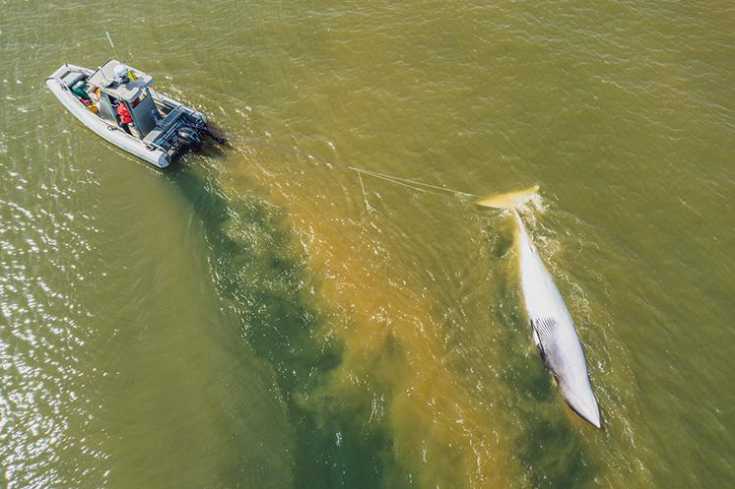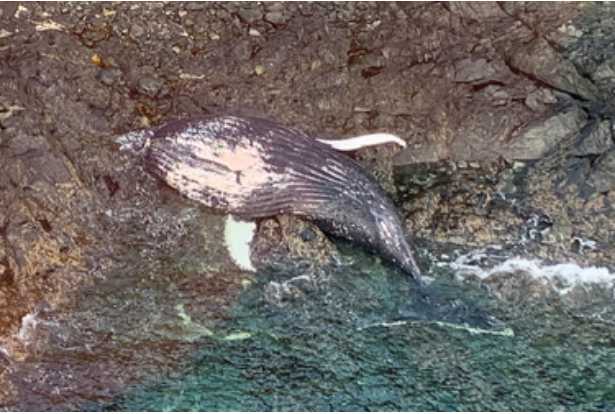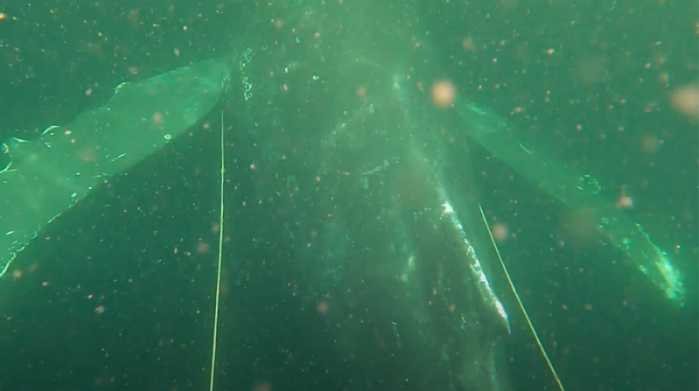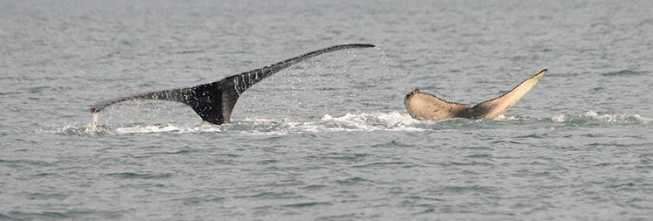
A NOAA-authorized team of marine mammal biologists performed a necropsy Sunday on a dead gray whale beached in the Copper River Delta, near Cordova, Alaska. The biologists–aided by the U.S. Coast Guard–spent approximately two and a half hours on Egg Island collecting tissue samples from the 42-foot long young adult female.
NOAA first received a report of the dead whale on May 14, but the tide carried it offshore. A Kodiak-based helicopter crew from the U.S. Coast Guard relocated the whale on Friday, May 17. The USCG responders collected tissue samples and photos for NOAA biologists.
This is the second confirmed dead gray whale found in Alaska this month. NOAA first received a report of a dead gray whale in Turnagain Arm, Cook Inlet on May 9. The agency has been monitoring that gray whale’s location in Turnagain Arm, hoping it will move to an accessible and safe location so biologists can collect tissue samples.
NOAA Fisheries and our stranding partners are tracking a spike in gray whale mortalities along the west coast of the United States during their spring migration. To date, 60 gray whales have been reported stranded dead along the west coast, from Mexico to Alaska. Of those necropsied, many were found to be skinny and malnourished.

Although the recent necropsy near Cordova did not immediately reveal a cause of death, it did provide scientists with the opportunity to collect samples to determine if the whale was exposed to harmful algal blooms or other illnesses. Lead veterinarian Kathy Burek-Huntington from Alaska Veterinary Pathology Services reports that the animal did not appear emaciated, but that blubber samples will be analyzed for more information on nutritional status.
Along with the U.S. Coast Guard, Sonia Kumar from Alaska Veterinary Pathology Services, and Karen Swatzbart with the Alaska Department of Fish and Game assisted with the partial necropsy.
[content id=”79272″]
“We are thankful for our strong partnerships,” said Alaska Regional Assistant Stranding Coordinator Sadie Wright. “The Coast Guard aircrew kept an eye out for this animal and got our team out there asap after locating it.”
Gray whales make one of the longest annual migrations of any mammal, traveling up to 10,000 miles round-trip, between winter nursing lagoons in Mexico to summer feeding grounds in the Arctic.
The eastern North Pacific population of gray whales was once listed under the Endangered Species Act, but successfully recovered and was delisted in 1994. They remain protected under the Marine Mammal Protection Act. Scientists estimate there are about 27,000 eastern North Pacific gray whales. Western North Pacific gray whales still remain endangered, with around 200 individuals in the population.
Source: NOAA








